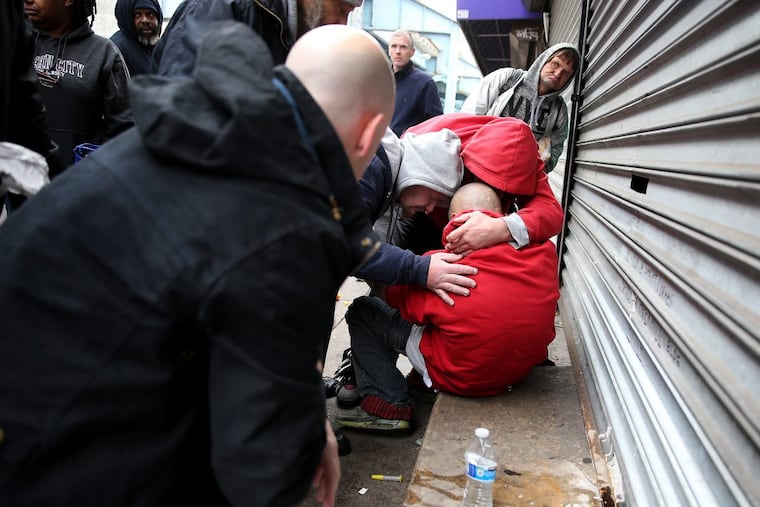Hey, Philly, this many overdose deaths is not normal. Just ask any other city. | Mike Newall
What can work somewhere else is just not nearly enough in a city as devastated by the opioid crisis as ours.

When it comes to the opioid overdose crisis, there really is no place like Philadelphia.
Sometimes you have to look outside our city limits to remind yourself of that.
Other places just don’t see the death that we do. And what can work somewhere else is just not nearly enough in a city as devastated by the crisis as ours.
We normalize so much in Philadelphia. Even the catastrophic death toll: More than 3,200 dead of overdoses in three years, 1,116 in 2018 alone. We’re on pace to match that rate of loss again this year.
That’s what came to mind this week as I read my colleague Aubrey Whelan’s report from Allegheny County, home to our sister city of the west, Pittsburgh. Whelan went there to find out what’s working in steel country: In 2018, the county managed to get overdose deaths down by more than 40%.
If we could do that, we’d be saving nearly 450 lives. So I read on.
Thing is, what worked in Pittsburgh is already happening here. Better access to treatment, more of the overdose-reversing drug naloxone, heightened awareness. So shouldn’t we be saving lives by the hundreds?
And that’s when you’re smacked with a stark reminder of just how big the crisis is in Philadelphia.
In no American city is there a neighborhood completely awash in drugs, as we’ve allowed Kensington to become. Not just a few blocks — a whole neighborhood.
In any other American city, a neighborhood that saw 53 overdose deaths in a year would be considered in a state of crisis. But that’s my neighborhood, South Philly, and we accept it as normal, because at least it’s not as bad as the river wards.
That’s the problem when you live in the middle of an ongoing catastrophe. Horrific starts to seem normal. The merely shocking is an improvement.
I’ve felt this feeling before, standing in a chilly park in Toronto two autumns ago, watching outreach workers treat people in a pop-up supervised injection site. It was technically unsanctioned by the government. But so many people had died that the city was convulsed by conversation about how to stem the deaths, and activists had taken matters into their own hands.
After all, the city nearly double our population was buckling under a tide of opioid overdose deaths: 308 that year, to be exact.
That’s a summer in Philly.
Pittsburgh doesn’t have a Kensington, as Whelan reported. Which means its overdose prevention efforts tend to be more evenly spread around the city. That’s what we can learn from our neighbors to the west.
In Philly, stigma and political cowardice have kept more permanent harm-reduction measures from taking root in places like South Philly and Northeast Philly, where so many are dying. If we can spread the overdose-prevention resources in Kensington — like a daily needle exchange — to the rest of the city, we might have a shot at reducing deaths.
We also have to adopt things that are truly radical. It’s been two months since a federal judge removed barriers to opening a supervised injection site in Philadelphia — which would, rightfully, be the first in America. But still, nothing has opened.
It’s business as usual in Philadelphia. But it doesn’t have to be — if only we would take a look around more often, and realize that the death and suffering in our city are the furthest thing from normal.